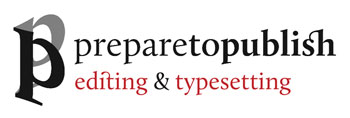
What is house style?
If there’s one thing we know readers like to write in and complain about, it’s grammar and spelling. Oops, I meant two things. Now, some of these things are indeed set in stone, but others are the whim of fashion – or even misunderstandings, such as all the fuss over split infinitives, which are perfectly fine grammatically. And others still are domain-specific matters.
A house style is simply a set of decisions made about those grey areas and how to present terms that might often crop up in your particular sector. Ideally, this is all set down clearly in a house style guide – and, in fact, a comprehensive one might include details relating to layout matters too (more on that shortly).
Why do you need a house style?
A key reason for adopting a house style (and sticking to it!) is professionalism: it marks out a publication which upholds consistency, reliability and high standards. From a more practical point of view, it can also save time: with a well-compiled style guide, it is easy to check which format a particular word or phrase should be in (%, per cent or percent, say) to avoid doubt. And if the guide is sent to contributors, it can save extra effort and correction on the part of sub-editors. Over time, your editorial team and contributors alike will become familiar with much of it, aiding efficiency.
What do you need to consider in your house style?
Here are some of the typical elements you would want to include when compiling a house style guide:
- Punctuation: for example, whether to use Oxford commas or not; whether full points are used in times or abbreviations; spacing before and after ellipses; single or double quotation marks; how bullet lists are formatted (there are even accessibility considerations with these: a full stop at the end of the last item is useful for people using screen reader software, for example); how to display URLs; and which words you might hyphenate (well-being or wellbeing?). Hyphen and comma usage in particular seem to attract controversy – but house style is sacred!
- Spelling: focused or focussed? -ise or -ize endings (the latter are not just American: Oxford style is to use them, for example).
- Capitalisation: editors and writers often battle over avoiding this (the former) or over-using it (the latter – OK, I’m biased). Your subject area may capitalise terms that other people wouldn’t, too – or, conversely, terms may be so common that you choose to drop initial capitals where other people might use them. ‘Government’ and ‘Parliament’ are common examples where styles differ.
- Formatting considerations: when should bold or italics be permitted, or title case? (When does ‘An article about something’ become An Entire Book?) do captions end in full points or not? what’s your maximum point size for headlines?
Sometimes semantic and formatting issues overlap: should layout subs choose crossheads that are a word or two taken from the section that follows (a traditional newspaper practice), and placed aesthetically, or are they to be more like sub-headings breaking up the text into discrete chunks?
Your style guide might also include guidance on the tone: is the writing style intended to be conversational, or academic? personal or formal? It might cover what sort of jargon you can use – or even which swear words are allowed… (Not just the ones you use when compiling the style guide!) And, of course, examples of all these things are often very helpful to include.
Finally, remember that house style, like language itself, is not set in stone: it evolves. Every year brings us new terminology, brands or slang. Each new issue of your publication might throw up a few new questions of presentation or style. If you make a decision on them write it down so the next person won’t have to do the same.
Remember that house style, like language itself, is not set in stone: it evolves.
How does house style relate to design?
The crosshead and headline examples above show how form and content can overlap – and there are many ways in which you might want to extend your style guide to encompass issues of branding and presentation. Do you have coloured running heads in your magazine, for example? What’s the palette for those? Do different colours represent different sections of the magazine, or different types of content (e.g. news, features, opinion columns)? How many levels of heading do you permit? Are there differences in your house style for how web-based and print-based content are presented? How many lines should pull quotes be allowed to have?
Of course, not every publication puts all of these things into a style guide, but it could help defuse arguments between design and editorial teams if decisions have been made or guidelines set beforehand. Ultimately, it all comes back to that idea of professionalism, and how your publications present themselves and their authority, and represent your wider brand.
What sort of resources can help with house style?
- The Guardian / Observer style guide is very detailed and available free online; ditto the Telegraph and the BBC – you can bet that these organisations have answered questions you might come up against before. Many magazine style guides can be found online too.
- The printed New Oxford Style Manual is used by many publishers as a fallback for reference; and I’d recommend the Oxford Dictionaries website (not the OED, though, as that tends to lag behind modern presentation and terminology!).
- The PerfectIt software program will check against your own style list for many forms of presentation and mark up a Word file for you; and The Bookalyser can check for common errors and inconsistencies.

About us
Prepare to Publish is a group of editorial and layout professionals with extensive experience of magazines, newspapers and books. If you want a bare bones house style to build upon, we have a general modern style guide you can use as a starting point. And if you’d like a report on how your publication comes across to an experienced eye, try our new Editorial Audit.
Email: hello@preparetopublish.com










